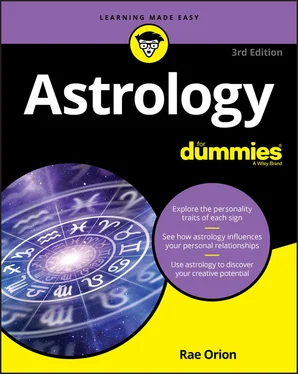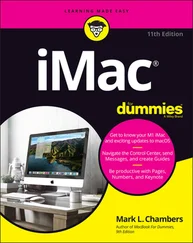The reality was that most Romans believed in astrology, but they associated it with the heavy hand of fate. So it fascinated and frightened them, and from time to time they acted on that ambivalence. On at least eight occasions between 139 BCE and 175 CE, disgruntled dignitaries expelled astrologers en masse (even if they found ways to allow their personal seers to remain). Belief in astrology was almost universal. But astrologers had no job security. They were always on probation.
When Nero was born on December 15, 37 CE, the astrologer on duty took one look at the infant’s chart and promptly fainted. Why was he so rattled? Nero had bellicose Mars, one of the two “malefic” planets, rising in Sagittarius closely conjunct the Sun and Ascendant, and square the other malefic, Saturn — an aggressive, defensive, quick-tempered, hard-hearted combination. His Moon in flamboyant Leo was square Jupiter in Scorpio, magnifying his arrogance, extravagance, and attention-getting ways. The Moon and Jupiter were both semi-square Saturn, for a touch of insecurity, pessimism, and suspicion. And unbeknownst to the astrologer, Pluto (which would not be discovered for nearly 1900 years) was exactly conjunct his Sun, adding a tyrannical, obsessive quality to an arrogant, violence-prone chart.
To be fair, the notion that Nero fiddled while Rome burned is a myth. He didn’t start the fire, Tacitus claims, because he wasn’t even in town. Other Roman writers insist that he did start it, possibly to clear space for a palace he wanted to build. All agree that he worked to rebuild the devastated city and that he blamed the Christians, many of whom he executed in horrific ways. Nor were they the only people he killed. His astrologer — who predicted correctly that he would murder his mother — would not have been surprised.
As Christianity gained strength, astrology lost it. After Constantine converted to Christianity in 312 CE, ancient practices were gradually outlawed, as were divination and astrology, which were linked to paganism and thought to deny free will. Around 364 CE, an assembly of clerics condemned magic and astrology. Even St. Augustine, who converted to Christianity in 386 CE, piled on. He held that the Christmas star heralded the end of astrology. He was wrong. But that didn’t matter. The heyday of astrology in the West was over.
Appreciating Arabic astrologers
After the Roman Empire collapsed in 476 CE, the golden aura of astrology dimmed in Europe and what had been the Roman Empire. In the Byzantine Empire, in Arabic lands, and throughout the Middle East, it continued to glow. Astrology could be found everywhere from the shipyards to the courts, where astrologers held official positions and received salaries. Even so, astrology did not meet with universal approval, especially after the rise of Islam in the seventh century. Muslim religious leaders, who felt that only God could predict the future, attacked astrology, as did a number of influential philosophers and poets. And still, the “science of the decrees of the stars,” as it was called, continued to attract adherents.
In the year 762, leaders of the Abbasid Caliphate founded a new capital city on the Tigris River with the help of astrologers, among them an Arab Jew named Masha’Allah, who chose an auspicious time to begin construction. A few years later, Baghdad’s first astrology school opened. The philosopher al-Kindi, whose writings ranged from cryptography to music to how to make perfume, was the first head of that school. He wrote about the 960-year Jupiter-Saturn cycle; the 97 so-called Arabic parts or lots, imaginary points derived according to formulae and symbolizing just about everything; and the stellar rays that he believed explained the power of the stars.
Throughout this period, tremendous work was being done in astrology, philosophy, mathematics, astronomy and other disciplines. Still, there was always debate about astrology. In the ninth century, an astrologer named Abū Ma‘shar (aka Albumasar) wrote a vigorous defense with an introduction that was translated into Greek and Latin, distributed widely, and pored over for centuries. In the eleventh century, the brilliant Muhammad ibn Ahmad al-Bīrūni was asked to create a textbook on astrology. He did so, covering the entire enterprise of Islamic astrology. But at the same time, mindful of possible criticism, he protected himself, explaining that he was only trying to show the intelligent reader what to avoid and to assist the indigent astronomer in making a living.
During the Golden Age of Islam, extending roughly from the eighth century through the thirteenth, mathematicians, engineers, astrologers, astronomers and other scientists made tremendous advances, the invention of algebra being one example. But the most important work done during this period was translation. Arabic scholars translated classical writers such as Aristotle, Ptolemy, his contemporary Vettius Valens, and the Hellenistic astrologer/poet Dorotheus of Sidon into Arabic from Greek, Sanskrit, Persian, Indian and other languages. Later, when many of those classical works were lost in Europe, Arabic translations allowed them to be reclaimed. Centuries of Arabic scholarship kept learning alive.
Meandering through Medieval Europe
In the twelfth century, Ptolemy’s Tetrabiblos , written in Greek, was translated from the Arabic into Latin, and the revival of astrology began. Planetary tables put together in Toledo, Spain, by Arabic astrologers appeared on the desks of astrologers in France and England. European Kings sought the counsel of learned Arabic astrologers such as the Jewish physician and astrologer Abrahan ibn Ezra. Universities offered courses in astrology and medicine. And the greatest writers of the age took notice.
The Italian poet Dante Alighieri (c. 1265 to 1321) has a fine time in his Inferno punishing wrong-doers. As he travels through the nine circles of hell with his imaginary guide, the Roman poet Virgil, he observes souls in torment everywhere — the lustful, the gluttonous, the wrathful, the misers, the thieves, and so on. They are all being tortured in hideous, imaginative ways — and the punishment always fits the crime. In the eighth circle Dante finds two astrologers, weeping. They are Guido Bonatti (c. 1207 to c. 1296), the foremost astrologer of the age, and Michael Scot (1175 to 1234), a Scottish astrologer who worked for popes and emperors and, according to Dante, “truly knew the game of magic fraud.” Their heads are twisted backwards; having tried to peer into the future, they can now only look behind them.
But Scot and Bonatti may have been stand-ins for the astrologer who really got under Dante’s skin: Cecco d’Ascoli (1257-1327), a professor of astrology at the University of Bologna who criticized Dante’s use of fictional devices and sought to “correct” Dante’s literary errors with a poem of his own while simultaneously trying to strike up a correspondence with him. Although D’Ascoli worked for Pope John XXII, he had ideas that did not sit well with the church, as a result of which he was put on trial for heresy and instructed not to teach. He failed to get the message. A few years later, teaching once again, he cast a horoscope for Jesus Christ, thereby implying that the stars, rather than God, controlled Christ’s fate. For this, he was burned at the stake, the only astrologer and the first university professor to be so punished.
Astrology fully infiltrated medieval life. When the Black Death raced across Europe in 1348, wiping out at least a third of the population, the King of France asked the medical faculty at the University of Paris to look into it. They soon determined that the bubonic plague was a result of a spectacular conjunction of Jupiter, Saturn, and Mars in March 1345. A lunar eclipse that same month only heightened the cosmic malevolence. Although people had other theories about the cause of the plague, this one made the most sense and was widely accepted, even if the conjunction preceded the plague by a full three years. The doctors had diagnosed the problem.
Читать дальше












